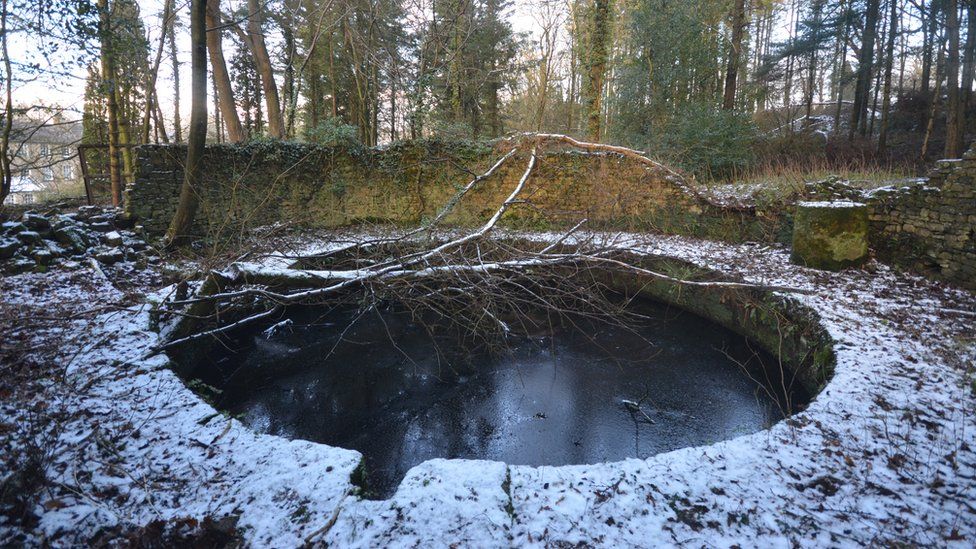Dolphinholme Worsted Mill: World's oldest surviving gasworks protected
- Published

The world's oldest surviving gasworks have been protected to ensure future generations learn "how engineering, industry and... society has developed".
Engineer Samuel Clegg's "exceptionally rare" works, built in 1811, were used to light Dolphinholme Worsted Mill in Lancashire, Historic England (HE) said.
The remains of the works, including a chimney and gas plant, have been put on the National Heritage List for England.
They represent industry's "experimental and pioneering phase", HE said.
The mill was one of the first in England to be lit by gas and as such, was the subject of one of the earliest-known drawings of a gas-lit building.
Built in 1795, the mill was water-powered and equipped with two water frames to spin worsted yarn.
The gasworks were installed in 1811 by Clegg, a move that saved the building's owners the cost of up to 1,500 candles every night.
It also lit the mill owner's house and the street in Dolphinholme it stood on, a feat which was unusual at the time as most public spaces or homes did not have gas lighting.
Clegg went on to build the first public gasworks at Westminster in 1813 before bringing gas lighting to towns and cities across England.
The mill and its adjoining gasworks operated until 1867, after which the mill's water wheel and buildings were dismantled.
HE chief executive Duncan Wilson, said the works were "exceptionally rare as one of the earliest surviving sites that connect us to the Industrial Revolution".
"This pioneering era of our history shaped the modern world," he added.
"It is vitally important we protect sites like these for generations to come, so we understand how engineering, industry and our wider society has developed."
The archaeological remains, which are located on private land and cannot be accessed by the public, have been protected by the Department for Digital, Culture, Media and Sport as a scheduled monument.
Why not follow BBC North West on Facebook, Twitter and Instagram? You can also send story ideas to northwest.newsonline@bbc.co.uk
- Published22 January 2016
- Published28 February 2007